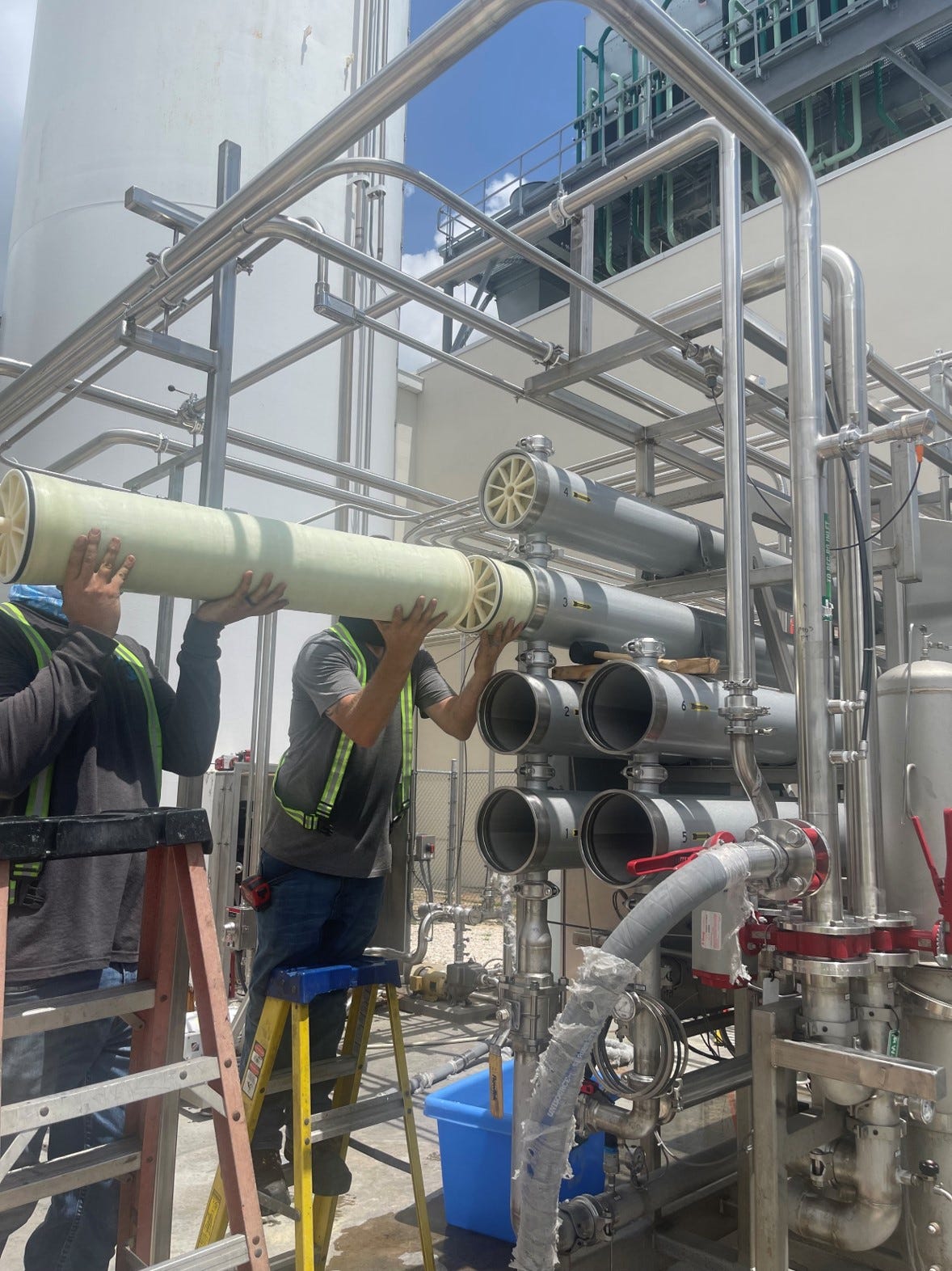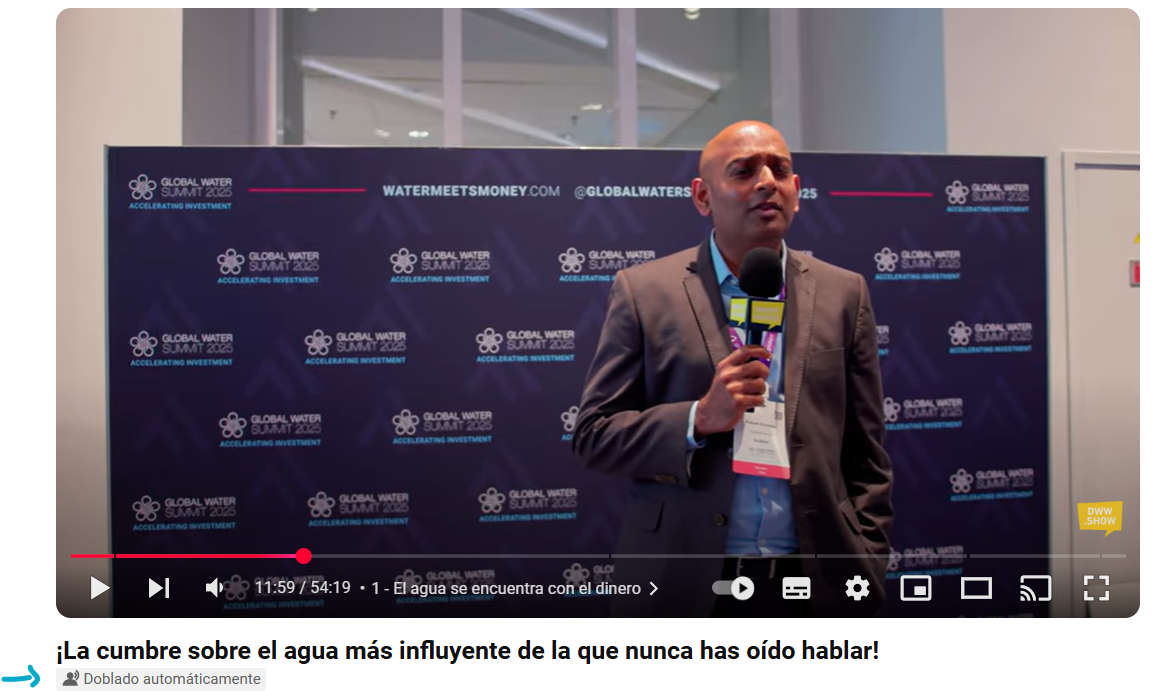Beyond the membrane, innovation you didn’t know existed.
The hidden innovation inside your membranes. Reinventing spacers. A quiet revolution in membrane tech. How 3D printing is changing membranes.
We keep learning about innovation in our industry.
It’s constantly evolving, shaped every day by new professionals, new technologies, and new ideas.
For those who view membranes as a single component, something you just purchase and integrate into a system based on performance or guarantees, you might not realize that some of the most meaningful improvements happen in hidden places.
Many people don’t even know that membrane sheets contain spacers, simply because they’ve never seen a membrane being fabricated or autopsied.
Traditionally, these spacers are placed between each membrane sheet.
Now enters the team at Aqua Membranes, with our guest Craig Beckman—a truly inspiring professional with a background many of us would envy.
So, what’s the superpower behind this innovation?
They’ve managed to add more membrane surface area per element, lowering operational costs.
How?
By 3D printing the spacers directly onto the membrane sheet, a remarkably difficult feat, but one they’ve successfully achieved.
Awards don’t always tell the whole story, but in this case, they’re definitely a sign that something exciting is happening.
What benefits does this bring?
Instead of typical mesh feed channels that can hinder performance, they use large-scale printers to apply the spacer directly onto the membrane surface. This innovation saves energy, increases productivity, and lowers the rate of fouling.
We once used the phrase for our Project Management channel:
"Data doesn’t lie."
“Data doesn’t lie, and data like this shows the massive benefit of printed spacers,” said Andrew Byrnes, from the Micron Ventures team.
As Craig says at the end of the short video:
If you don’t trust it, just try it.
Be sure to catch one of our upcoming episodes in a few days, where you'll get a clearer picture of how innovation is commercialized, and why this technology might not have reached your desk yet.
And here’s something important:
This isn’t just for new, greenfield projects. Any existing facility can retrofit and test these membranes.
I also had a great time catching up with Benjamin Schulz from their team during Aquatech Amsterdam, at the BlueTech gathering over a beer.
He had a crazy travel issue trying to get to Amsterdam, and his posts and pictures about it were hilarious.
He really knows how to stay top-of-mind, especially with something as simple and effective as the ROI Calculator.
Because in today’s world, attention is one of our most valuable currencies.
And that calculator? I haven’t been able to forget it. You need to watch it.
If you want to understand the return on investment (ROI) of adopting this membrane technology, what better way than a tool that shows you the numbers?
Contest
A few weeks ago, I launched a challenge on LinkedIn:
Who could guess what this innovation was all about?
The answer? Our current guest.
Here’s the video in case you missed it:
Project Management Channel
We released Episode #3 of our project management series—this time focusing on a commonly used (and often misunderstood) buzzword: leadership.
It’s easy to say, “you need to be a good leader.”
But leadership isn’t just a trait for CEOs, it’s essential at every level of the management chain in a corporate setting.
In fact, being a manager is becoming a commodity. Right?
What truly sets people apart is how they lead and how they handle the most challenging part of any role: people.
Whether managing up or down, people dynamics are rarely simple.
This episode is a reminder of the real complexity faced by middle management in our daily work.
But it’s also a call for empathy. many managers are heavily influenced, even constrained, by decisions from above.
So, next time you're feeling frustrated (I know you are from time to time, as I face these problems too), take a step back and consider what pressures they might be under, and try to support them.
IDRA High-Level Colloquium
What a gathering! This year’s High-Level Colloqium organised by International Desalination and Reuse Association (IDRA) is truly high level, participation has been limited to a select group of global leaders in the water sector.
I'm looking forward to the 2026 edition, which is expected to be more open. I can’t wait.
The event is happening literally in front of my home, and as a water professional, I feel proud that Seville (my city) and Andalusia (my region) are playing such a prominent role on the water world stage.
I’ll attend the dinner on July 1st at the Alcázar of Seville, from 20:30 to 23:30. If you're attending, see you there!
The focus is on desalination and water reuse, a mix that already ensures water security in many countries.
Just taking a look at the headlines of the talks and speakers, anybody can grasp an idea of where we’re heading.
I have some of these names in my tracking list for next season purpose.
I need to confess I’m specially interested in Panel 1.
Our community already got some feelings with our episode with Jesus Maza, the difficulties in reflecting economics in the current policy of european water reuse.
The talent is here. The tech and tools are available. Let’s move forward.
Breaking Down the Language Barriers
I’ve been expecting this since 2023, sooner or later, the language barrier was bound to fade.
In The Water MBA TV, around 30-40% of the content is Spanish language. So for many subscribers, it may be a challenge not get the most out of our platform.
Three months ago, I looked into the option of automatic translation, but the cost was still a bit high.
Last days, I opened Antoine Walter’s YouTube channel and couldn’t believe it. YouTube had automatically detected that I’m in Spain and already provided translations in my language.
In Spanish, the voice sounds exactly like what MrBeast uses.
(If you don’t know MrBeast, he’s the #1 YouTuber in the world. Interestingly, in Spain, his videos are among the most watched, even though it’s not the original version, but a translation.)
So I’m not sure how long it will take, but I believe that sooner or later, we’ll be able to implement automatic translation on our platform too.
That means: same content, multiplied value, democratized learning, fewer barriers to sharing knowledge and making connections.
Reminder
July and August will be our preparation period (phone calls, reading, research, time for “brain valorisation…”, etc) for the upcoming season starting in September/October 2025.
During these 2 months, you’ll receive special articles covering some of our TOP episodes from 2024 that didn’t originally have dedicated write-ups.
Also, for next season, we’re opening the opportunity to include brief sponsorships at the beginning of our articles.
This helps us reinvest any revenue into new features, platform upgrades, and more learning opportunities for our growing community.
If you're interested or want more information → Be Our Sponsor










That seems mighty quick! Production level speeds??
Love it!